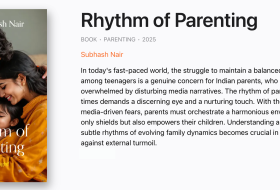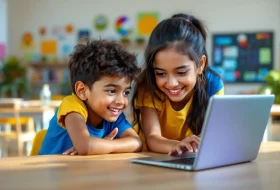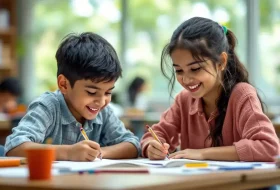The Importance
Active learning is a vital component in modern education, offering students the opportunity to engage with material in ways that are both interactive and impactful. Traditional methods of teaching often position students as passive receivers of information, which can lead to disengagement and superficial understanding. However, active learning flips this script, allowing students to immerse themselves in their education. Students are motivated to delve deeper into subjects and cultivate a true passion for their studies in this approach because it promotes an atmosphere of curiosity. When students work together, ask questions, and uncover new ideas collectively, it is called active learning.
Active learning is built upon a variety of techniques, which we will explore in this article. You’ll find insights into the benefits of group work, how collaboration enhances communication skills, and why project-based learning offers invaluable hands-on experience. We’ll also explore the evolving role of teachers who guide and nurture these dynamic learning environments, transitioning from conveyors of knowledge to facilitators of discovery. In order to make sure that active learning is easily integrated into existing curricula, this chapter will also address potential challenges that teachers might face and offer ways to overcome them. In this chapter, we will provide teachers with practical advice on how to create inclusive and engaging classrooms. Our aim is to provide them with the resources they need to ensure that all students benefit from active learning.
Methodology
A dynamic method of instruction, active learning is quickly becoming the norm in schools across the globe. By involving them more actively in their own learning, this approach turns students from mere observers of the classroom into contributors to their own education. Students not only find learning more interesting when they actively participate in the process, but they also remember more of what they study. Picture a lively classroom full of students engaged in thoughtful discussion, questioning, and topic exploration. Every student’s voice is heard, and their thoughts are respected in this scene, which exemplifies an active learning environment.
Collaborative projects are an essential part of active learning. Students develop their skills in effective argumentation and considerate listening through collaborative projects. Working together in these contexts helps students not only retain more information but also hone important soft skills like collaboration and problem-solving. Students develop an appreciation for a wide range of subjects, from math to social studies, through group projects that require them to delve deeply into their studies. As a lesson on ancient civilisations progresses, students could work on a project to recreate artefacts from the past or act out pivotal historical debates, bringing the past to life.
Students are able to put their theoretical knowledge to use in a real-world setting through project-based learning, which is inherently linked to collaboration. Research, planning, execution, and presentation are the usual steps for students working on a project. To complete this task, one must be analytical, creative, and persistent. Students have the opportunity to put the concepts of chemistry and physics into practice through hands-on experiments in science classes. They learn more than just the material; they also understand how to conduct experiments, formulate hypotheses, and draw conclusions using the scientific method. Learning becomes meaningful and unforgettable through such immersive experiences.
The educator’s evolving role is crucial to the efficacy of these active learning strategies. Instead of just relaying facts and figures, today’s educators play the role of facilitators, creating a safe space where students feel comfortable asking questions and engaging in group work. Teachers help students connect ideas from different fields, provide them constructive criticism, and lead class discussions. Teachers play a crucial role in creating an environment where students feel comfortable expressing themselves and actively participating in class discussions. The idea is to build scaffolding that students can use to push themselves to their limits and then take it down as they become more capable on their own.
Implementing active learning methods makes guidance especially relevant. Changes from lecturing to more interactive forms of instruction may be necessary for educators. Making this change can be difficult at times; to overcome this, we need methods that successfully incorporate active learning into our current curricula. To help make this transition as smooth as possible and as beneficial for students as possible, professional development opportunities are available to teachers.
Active learning also creates a setting where students are more likely to work together. Students develop their interpersonal and communication skills, as well as their ability to work through differences and capitalise on individual strengths, in the context of collaborative projects. The diverse viewpoints represented in the group enhance the overall learning experience and help members of the group to see things from new angles. Building a peaceful classroom community requires students to respect and empathise with one another, qualities fostered when students share what they know and learn from others.
Teachers can cultivate an environment conducive to active learning by utilising a variety of strategies that are customised to various subjects and learning styles. Visual learning may be more effective for some students than verbal or physical learning. Keeping each student engaged and motivated throughout the learning process is possible when teachers take the time to observe and understand their students’ preferences. The educational experience can be made more inclusive and comprehensive by utilising a variety of strategies, such as visual aids, storytelling, games, or technology-based learning, to accommodate different needs.
Active learning strategies also include the promotion of analytical and problem-solving thinking. Questioning, scenario analysis, and creative problem solving are all skills that students should be encouraged to cultivate. Students are thoroughly engaged with the subject matter when they are challenged to think critically and creatively through problem-solving tasks. When taught mathematical concepts through the lens of complex real-world problems rather than simple equations, students are motivated to think creatively and practically about how to solve these problems.
Active learning’s adaptability is its fundamental beauty. It rejects the idea that there is a universally applicable strategy. The focus should instead be on making the learning environment adaptable and lively so that students’ passion for learning can thrive. Active learning has many benefits, and when teachers are aware of them, they can transform their classrooms into dynamic places where students can learn and grow. Not only do these practices lead to better academic outcomes, but they also help students and teachers grow as individuals.
Resolving Issues
Many teachers may find the shift from more conventional to more active learning strategies to be a difficult one. It can be difficult to make this change because it usually means giving up things you have grown used to. This is why continuing education for professionals is so important. Educators require organised chances to gain knowledge and practice new approaches in a nurturing setting. To equip educators for this change, there are a variety of resources available, including workshops, peer mentoring, and online courses focused on active learning methodologies. Teachers can better inspire their students to take an active role in class discussions and learning when they make time for professional development.
One more potent tactic that can revolutionise classroom instruction is the use of technology. Simulations provide students with the opportunity to experience intricate situations that would be extremely difficult, if not impossible, to replicate in the real world. To illustrate the impact of various pollutants on ecosystems, picture an environmental science student taking part in a virtual reality simulation. By providing concrete examples of how theoretical ideas are applied, this type of interaction aids in the consolidation of knowledge. Outside of the traditional classroom setting, students can also benefit from online discussions as a means of collaborating and exchanging ideas. Such resources promote diversity of thought in problem-solving activities and offer a voice to students who may otherwise be shy, both of which contribute to an inclusive classroom.
Schools should organise workshops where teachers can learn about different technological tools and collaborate on ideas for how to use them to achieve curriculum goals. Teachers will be able to use this information to successfully integrate these innovations into their lessons. By doing so, we can make sure that technology supports, rather than detracts from, our educational goals.
Active learning is a must for developing critical thinking skills. Students are motivated to analyse data and develop original solutions when they work on problems that have real-world implications. Students are encouraged to apply their knowledge in meaningful ways through these activities, which range from designing a sustainable city plan to developing a marketing strategy for a nonprofit organisation. Posing open-ended questions that necessitate thoughtful investigation and conversation is one way for teachers to spark this type of profound engagement. Students are better prepared for the challenges of their future jobs when they practice thinking like experts in their fields as part of their regular coursework.
The cornerstone of effective active learning is the establishment of a nurturing classroom atmosphere. The mood for discovery and honest communication is set in an inviting, comfortable environment. Emotional safety is just as important as physical comfort. Teachers and students alike can benefit from using feedback as a means of improvement. Consistently providing students with opportunities to share their thoughts and feelings about class activities helps to foster an environment of continuous improvement. Educators acquire useful insights to improve their teaching methods, and students are empowered to take ownership of their learning through this process.
Establishing anonymous survey platforms or suggestion boxes allows students to openly express their ideas without worrying about being judged. As a general rule, this can be useful for welcoming criticism. Students can also be encouraged to evaluate their own performance and find ways to improve by including reflective exercises at the conclusion of projects. Students are encouraged to adopt a growth mindset in the classroom through this practice. They will start to view setbacks not as fatalities but as opportunities for development.
Emphasising teamwork is also crucial in establishing this supportive environment. Collaborative problem-solving and debate help students understand other people’s points of view and hone their interpersonal skills, which are valuable in any field. Group projects should be well-planned so that all students have an equal opportunity to participate and reap the rewards of their work.
A guideline for cultivating a culture of mutual respect and empathy can significantly improve active learning environments. Promoting active listening, valuing diverse perspectives, and fostering mutual support among students can enhance classroom dynamics. Fundamental practices such as instituting ground rules for discussions and acknowledging minor achievements can substantially enhance a positive and inclusive learning environment.
Connecting the Dots
One revolutionary method that is changing the way students participate in their education is active learning. Classes can be more engaging and impactful when students actively participate in their own learning, as we have discussed throughout this article. In addition to delving more deeply into topics, students develop important skills like collaboration and problem-solving through engaging in group activities and projects. Among teachers’ crucial responsibilities is creating a classroom community where students feel comfortable expressing their opinions and taking measured risks. Lessons are becoming less lecture-heavy and more interactive so that students have more opportunities to learn by doing and collaborating.
Teachers and students alike must possess adaptability and creativity to conquer the obstacles that active learning poses. Students’ access to simulations and online discussion forums that expand their learning beyond the four walls of the classroom is one way that technology, when used properly, can increase participation. Instilling in students the ability to think critically and creatively in preparation for the challenges they will face in the real world is another crucial component. Teachers can make a difference in their students’ classroom experiences by listening to their feedback and ideas and by working to create a climate of understanding and acceptance. Through the integration of these strategies, a spirit of active learning is encouraged, turning classrooms into vibrant spaces marked by inquisitiveness and discovery, which in turn promote academic and personal growth.



